35 Years Ago, Nintendo's First Brush With Video Disaster
In 1979, a single game nearly sank the company's game business before it even launched.
This article first appeared on USgamer, a partner publication of VG247. Some content, such as this article, has been migrated to VG247 for posterity after USgamer's closure - but it has not been edited or further vetted by the VG247 team.
Since Nintendo's financials came out last week, we've seen a lot of hand-wringing over the company's imminent demise along with all sorts of wild theories about how they could totally reverse their flagging fortunes by doing one thing or another. Yet while it's true things don't look great for the company at the moment, this is hardly the first time Nintendo has found itself in a bind.
On the contrary, Nintendo's history is defined by moments of crisis and the deft, almost desperate maneuvers that changed the course of its business for the better. We can look back to the GameCube era and observe how Nintendo stagnated in the face of the PlayStation 2 and Xbox, only to save itself with the DS and Wii. We can observe the heartwrenching launch of the Virtual Boy, which could have destroyed Nintendo's portable gaming business if the surprise success of Pokémon hadn't allowed the company to keep the insanely profitable Game Boy line running for another half-decade. We could even take into account the truly olden days of the company, when it bounced from one business venture to another in search of a hit. Eventually Nintendo found success as a toymaker -- a niche that quickly came to an end when the '70s oil crisis made the cost of manufacturing toys too expensive to be viable, pushing the company into arcade and video games.
Make no mistake about it, though: Nintendo's early forays into video games were anything but categorical successes. The company doesn't really like to venture further into its own past than the Famicom launch in the summer of 1983 outside of the occasional special edition hanafuda card set, but the fact is that the company's transition from toymaker to game manufacturer proved to be anything but smooth. Back in 1979 -- 35 years ago -- Nintendo's first major arcade push very nearly tipped the company over the edge of financial ruin. We think of the '80s as a decade dominated by Nintendo games, but in truth the company barely even made it to 1981.
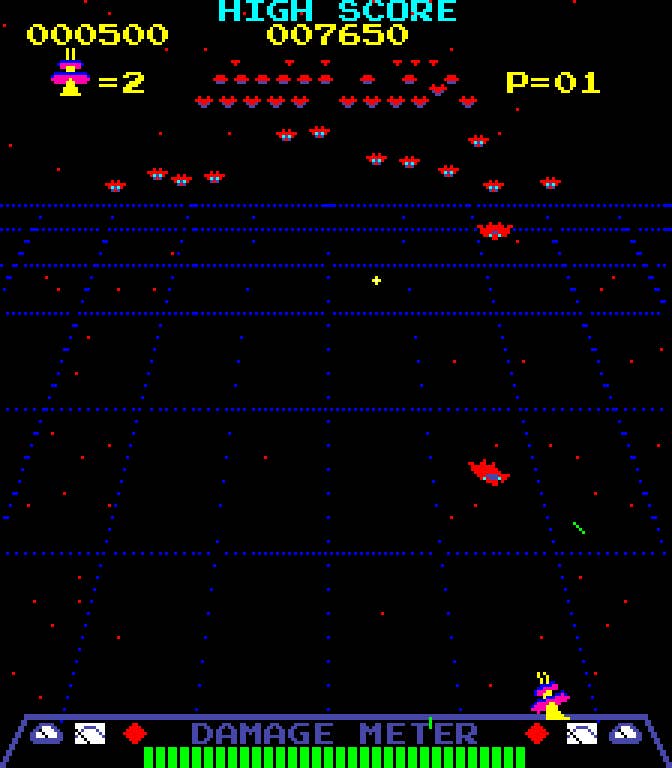
What happened? Nintendo pinned its hopes and dreams on Radar Scope, an arcade game in the Space Invaders vein. As in Invaders, Radar Scope placed players in control of a small ship at the bottom of the screen, sliding left and right while firing at advancing waves of alien marauders marching downward from the top. These games absolutely flooded arcades in 1979; Invaders had been a massive hit in Japanese arcades the year before, and as with Pong before it and Pac-Man soon after, the success enjoyed by such a simple concept inspired countless imitators.
To its credit, Radar Scope belonged to the better class of Invaders rip-offs. The baseline Invaders clone simply copied Taito's creation without adding anything new or interesting to the mix, while the better ones tried to improve on what had come before. Games like Radar Scope definitely came across as derivative, but at least they had some ambition. Though Nintendo's project didn't live up to the high water mark of Namco's Galaxian (a game Space Invaders designer Tomohiro Nishikaido cited as a great improvement on his own work in an interview on Game Center CX), it added some interest to the format with a cool visual twist: Single-point perspective.
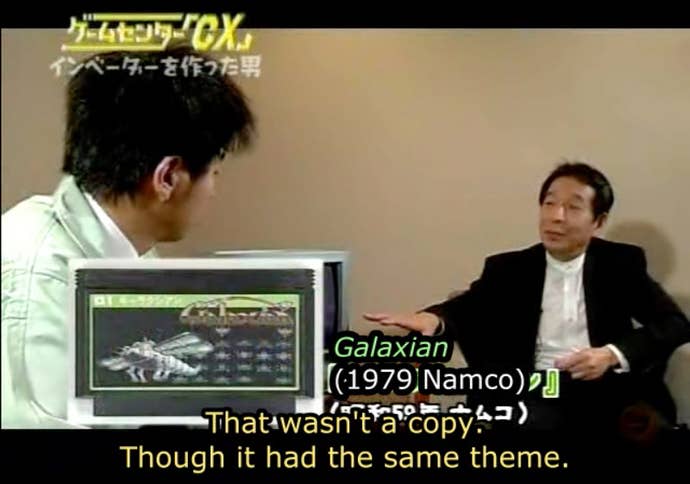
Unlike competing Invaders-come-lately, which presented their action on a flat plane, Radar Scope tilted the playing field "away" from the player, creating the sensation that the battlefield stretched into a vanishing point on the horizon and that the alien intruders were marching from somewhere in the distance. That the game featured such a crafty visual embellishment perhaps should come as little surprise; a young artist named Shigeru Miyamoto is credited by some for its graphic design, though his precise role is a matter of considerable debate. Some source cite him as a graphic designer, while others indicate he worked only on the cabinet art, and David Sheff's Game Over simply states that he found it "simplistic and banal" after the fact.
Whatever the case, Radar Scope did reasonably well in Japan following its December 1979 debut; according to Chris Kohler's Power•Up, only Pac-Man outperformed it throughout 1980. As the most popular of Nintendo's stable of early arcade projects, the company's management pegged it as the ideal candidate to serve as the vanguard of its move into international markets. Several thousand Radar Scope units were manufactured and shipped to New York City to be sold across America. Nintendo was about to go global in a big way.
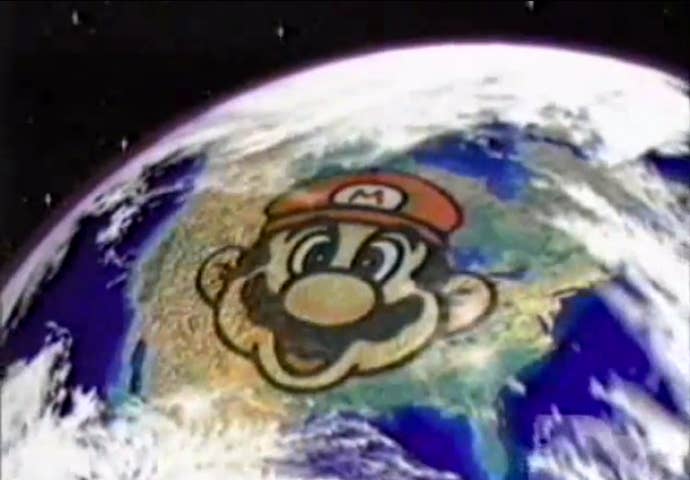
Alas, it was not to be; instead, Nintendo's Radar Scope ambitions led to near-disaster. Nintendo didn't seem to realize that Space Invaders, while popular around the world, never saw the same success outside of Japan that it had in its home territory. While Invaders commanded such mindshare in Japan that simply making a similar game was a sure ticket to massive cashflow for several years, that wasn't the case elsewhere.
In any case, the logistics of international business proved daunting for a company as small as Nintendo. Rather than licensing the game to an American manufacturer as Namco and Konami did for titles like Pac-Man and Frogger, Nintendo aspired to build its own network by going it alone -- admirable, but also a huge risk. Radar Scope didn't enter the U.S. market until November 1980, almost a full year after its Japanese debut, by which late date the Invaders clone ship had sailed. Pac-Mania dominated the world, and a rigid missile base shooter felt hopelessly dated... even one with fancy graphical embellishments like those sported by Radar Scope.
The net result was that Radar Scope -- Nintendo's entrée into the U.S. market -- nearly sank the company. Only a third of the units they hoped to ship across the country found buyers, leaving them not only with pricey unsold inventory but also footing the bill for the expensive warehouse space necessary to store a few thousand arcade cabinets. Of course, what happened next has become legend: Nintendo's boss, the late Hiroshi Yamauchi, tapped Miyamoto to come up with a new game that could be swapped into those unwanted Radar Scope cabinets. This led to Donkey Kong, which in turn led not only to arcade profits but also gave Nintendo a lever with which to enter the console market.
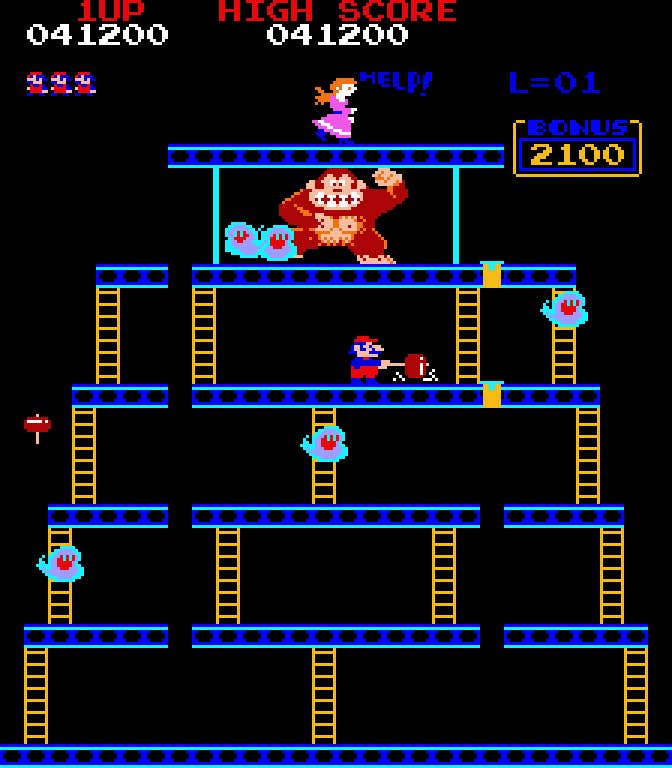
Sadly, Radar Scope tends to be brushed under the rug as a matter of no real significance: A failed game whose only positive contribution to gaming history was providing an opportunity for something better to come along. In truth, though, Radar Scope wasn't a poor game by any measure; its crimes were instead a simple matter of timing, and of being the focus of Nintendo's ill-conceived ambitions.
As Space Invaders knock-offs go, Radar Scope really was pretty solid. It borrowed liberally from both Space Invaders and Galaxian, the two big names in the arcades at the time, but it felt unique within the confines of the fixed-screen shooter genre. The pitched battlefield was more than a visual embellishment, as it helped create a sense of distance that limited the player's attack range. Most enemies hovered out of range until their active comrades were destroyed, at which point they'd come forward into the "live" field of combat. Not only did this affect the player's tactics, it also gave a sense of progression and accomplishment as the enemy's numbers slowly thinned away.
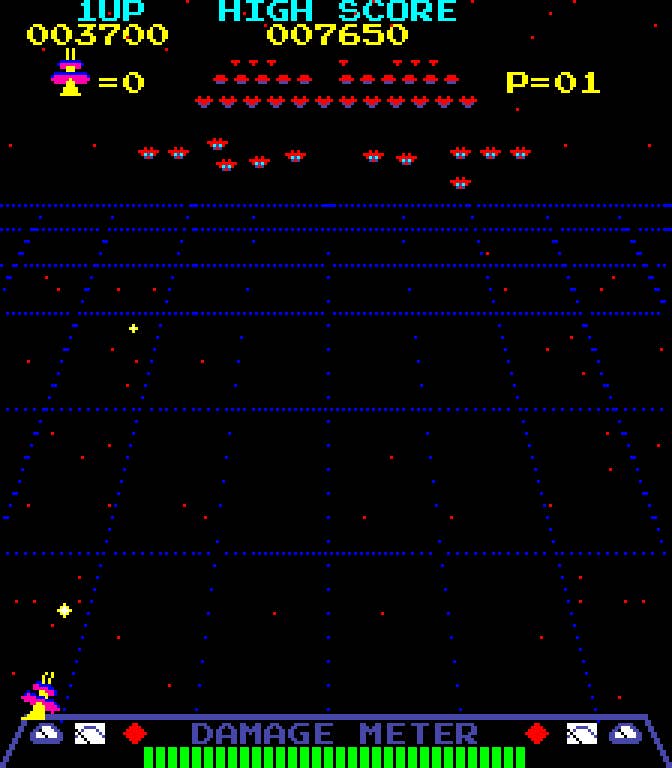
The enemy's patterns brought a new level of complexity to the genre as well. As opponents swooped forward to attack, they grew in size with a scaling effect. Destroying enemies at their largest, nearest point of attack would net a player more points, though there was also considerable danger to this tactic; attacking ships didn't simply shoot straight ahead as in other Space Invaders clones, but could also fire at a 45-degree angle as they swept along the lower edge of the screen. Additional game factors like the damage meter that displayed the health of the base the player had to protect and enemy ships that would flame out and come crashing to the bottom of the screen kept things lively.
It's a shame most people will probably never play Radar Scope legitimately; given its poor performance, it's something of a rarity these days. And Nintendo for its part resolutely ignores the existence of its pre-NES game catalog, so we'll almost certainly never see Radar Scope collected onto any sort of anthology or reproduced on Virtual Console. Still, the most important thing about Radar Scope definitely comes from the way it demonstrates Nintendo's history of misreading the market only to bounce back with a perfect saving throw. The only question now is whether or not history will repeat itself once again with Wii U.







.jpg?width=291&height=164&fit=crop&quality=80&format=jpg&auto=webp)
